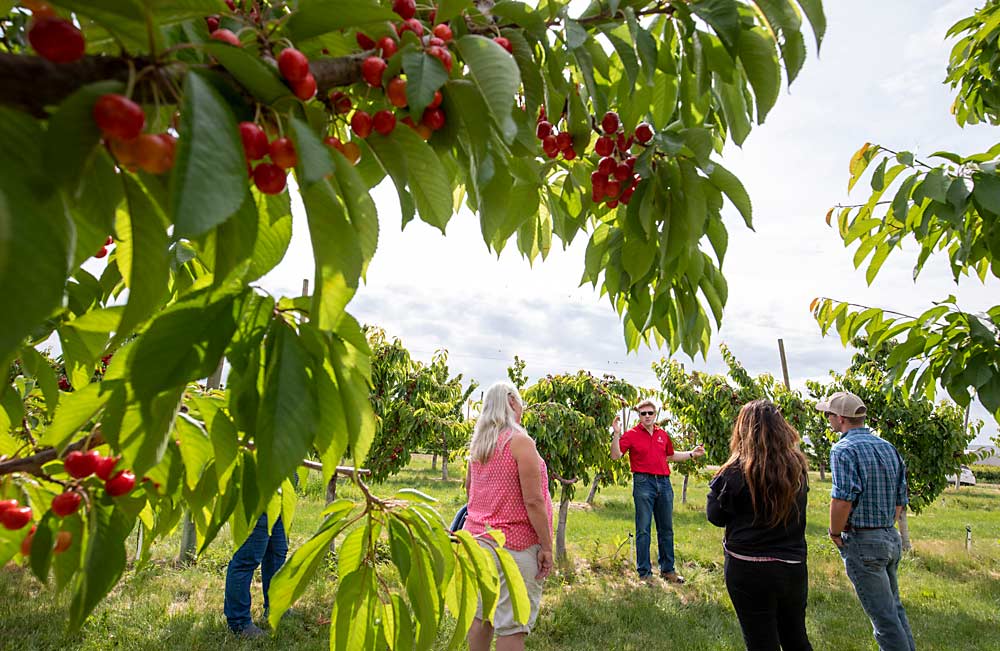
What makes a good cherry? Large, firm, sweet fruit with appealing flavor. What makes a great cherry? A good cherry that harvests in an optimum market window, sets a reliable, consistent crop without the need for thinning and delivers strong packouts of fruit that can maintain quality through weeks in storage.
At Washington State University’s cherry breeding program, great cherries prove themselves through phase 3 evaluations in commercial blocks around the region to see if they pass the great cherry test.
Three cultivar-candidates will face that scrutiny over the next few years, with the potential that successful selections could be on track for release by 2025 or 2026, said Per McCord, the breeder who launched renovation efforts for the cherry breeding program when he was hired in 2018.
Those selections — two that harvest near Chelan but offer larger, firmer fruit, and one very large selection that harvests a couple of days after Bing — were just planted at scale in 2020 and 2021.
While McCord and his industry advisors wait for those trees to reach production, he’s busy building out the program’s “pipeline.” That includes 10 phase 2 selections, over 4,000 new seedlings, and new facilities and techniques to help him target early ripening.
“We’re moving forward on pretty much all fronts,” McCord said. “We’ve got good-looking selections in phase 3 trials. We’ve restarted the breeding program, targeting traits growers say are important to them, and on the research side, we are conducting research that has direct application to producing better cherry varieties.”
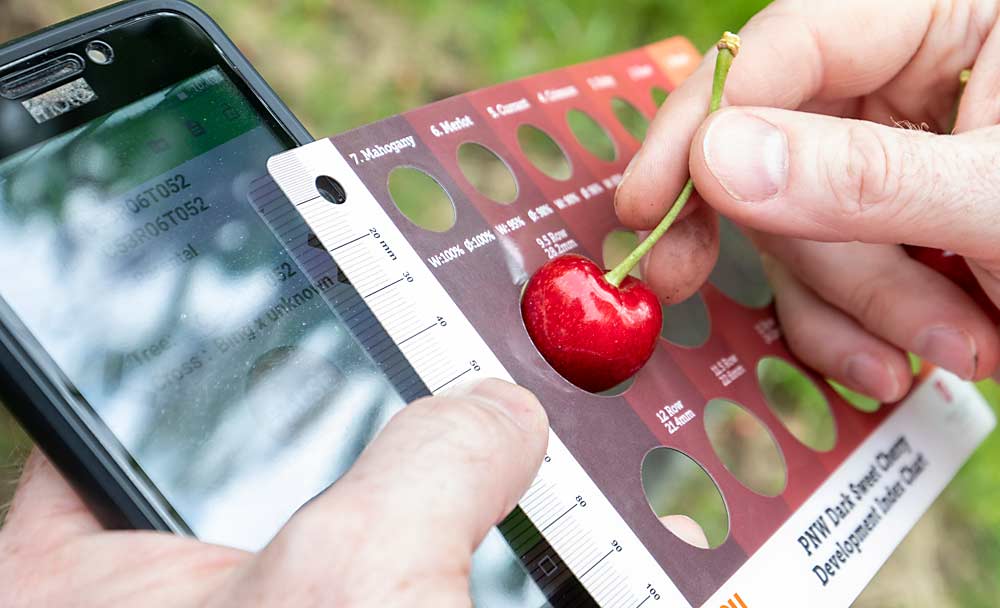
Orchard evaluations
During cherry harvest, members of the breeding program’s advisory committee meet weekly to walk through the phase 1 orchards, looking for promising fruit. When someone spots a large cherry, McCord checks for size, firmness and flavor. Only those that pass that test head to the lab for further evaluation of defects, color, Brix and titratable acidity.
For example, during an early June 2021 visit, an early ripening blush cherry caught the eye of Dena Ybarra, a member of the Washington Tree Fruit Research Commission and an advisor to the breeding program.
“If it doesn’t show any bruising, that’s ideal,” she said, scrutinizing the fruit while McCord scanned the tree’s bar-coded tag and entered some notes into the selection’s records.
Another tree, showing signs of lots of bird damage, drew the attention of Rob Blakey, research and development director for Stemilt Growers.
“That means it’s early and high-sugar,” he said. “If the birds aren’t eating it, I don’t want to.”
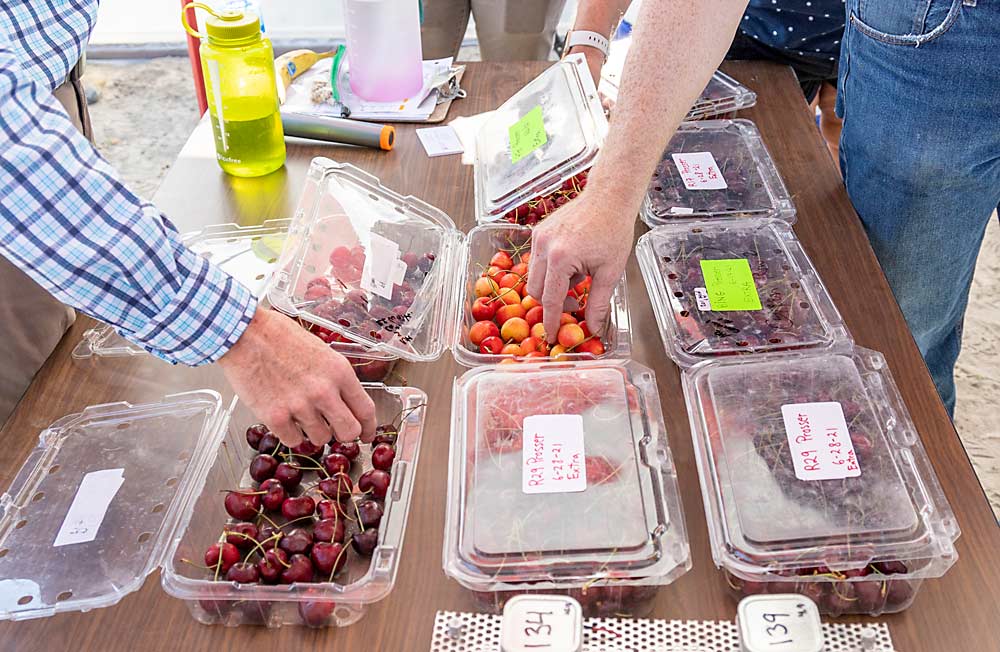
They are also looking for potential new breeding parents.
“If you are looking for your next variety, it needs to check all the boxes,” McCord said. “But along the way, we might find a selection that is too small, but a week earlier than everything else. If it has some trait in the extreme, we can combine it with another parent with complementary traits.”
It takes a lot to stand out. Over the past five years, McCord has planted 4,179 seedlings into the field (after using genetic markers to weed out those lacking self-fertility or powdery mildew resistance genes). He evaluates for two to three years of fruit data before he cuts down the block to replant with fresh genetics.
“The amount of trees thrown away between phase 1 and phase 2 is almost all of them,” he said.
Research and renewal
Over the past four years, cherry growers have invested almost half a million dollars into the breeding program itself, along with additional grants that fund McCord’s research collaborations with WSU colleagues, including pathologist Scott Harper and geneticist Cameron Peace. With state funding, he also collaborates with horticulturist Matt Whiting on cold hardiness.
A $79,000 grant, provided by the Washington Tree Fruit Research Commission and the Oregon Sweet Cherry Commission, funded greenhouse renovations and the construction of a new hoop house that protects potted breeding parents from the elements. That’s a real benefit in a year such as this, McCord said, so he doesn’t lose key crosses to frost.
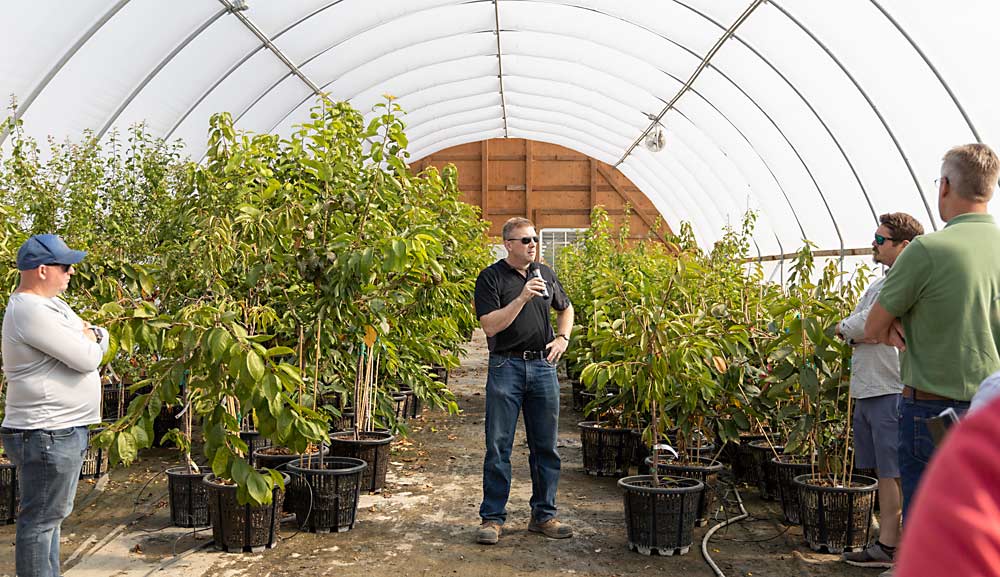
Keeping more parents in pots can make crossing easier, too. Typically, McCord emasculates the flowers — removing the stamens and pollen — and then paints onto the styles the pollen he’s selected. But this labor-intensive process can also be rough on flowers, leading to low seed set.
The alternative is to put two potted parents together under a net cage and release some bees to do the pollination the traditional way, which can produce a lot more seeds for each cross, McCord said.
In the orchard, a few branches of blooms in a bucket can go under a cage with its target match, too. He’s doing about a third of his crosses this way, boosting seed production, but the traditional approach allows him to do a different cross on each branch of a parent, leading to more crossing opportunities.
“We like to let the bees do the work for us,” he said, adding that it’s still a work in progress to keep the bees happy in the hoop house conditions. “There’s a lot of things that can go right or wrong with both methods.”
Another innovation: a technique called embryo rescue. Growers want early cherries, but breeding early ripening fruit is a challenge because the fruit often matures before the seeds, which then don’t germinate successfully. McCord and his students have been developing growth-medium and handling techniques to rescue those embryos and help them continue to develop and germinate in test tubes.
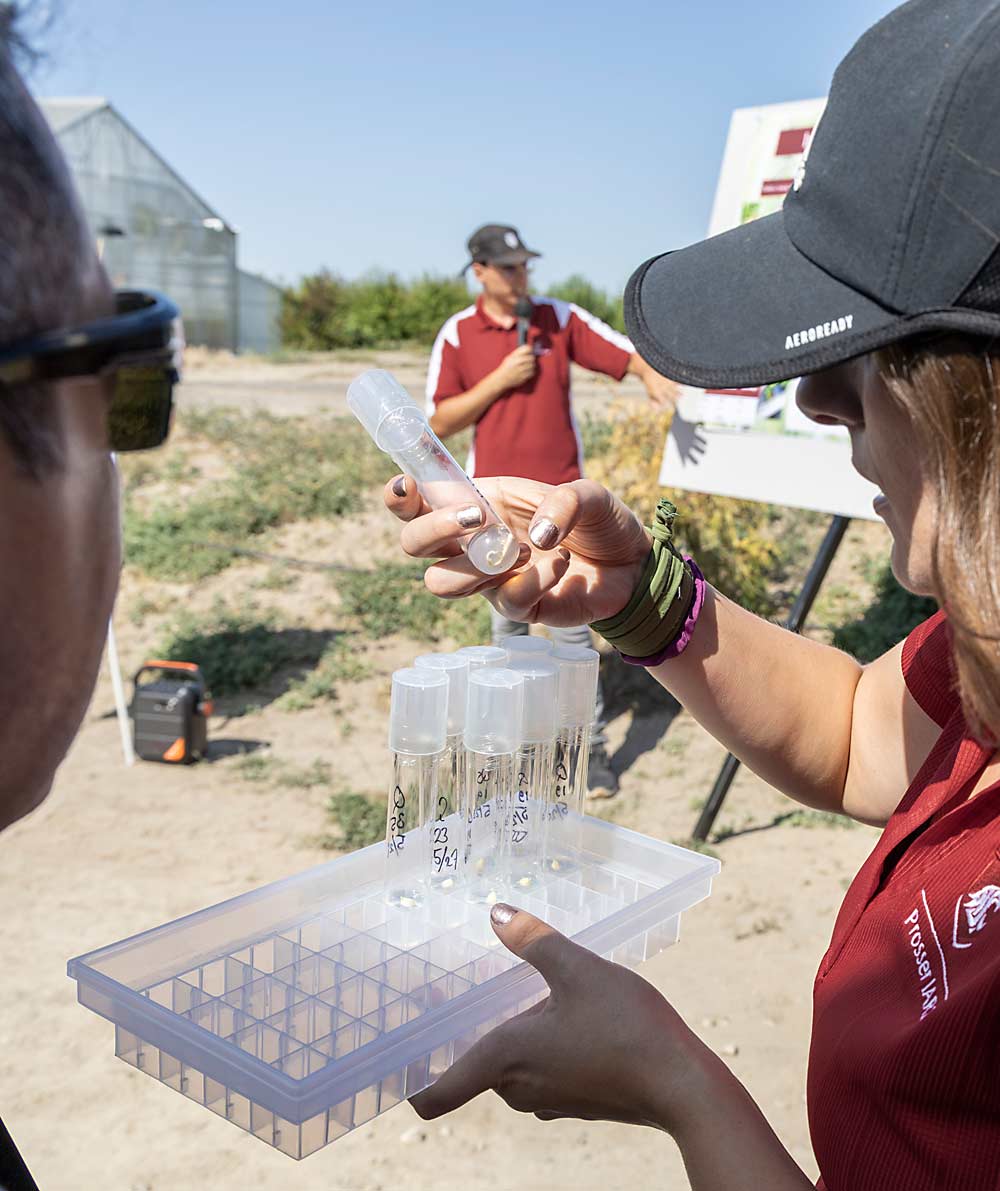
“We’re really pushing hard for the early ripening market,” he said.
One of McCord’s graduate students is studying the genetics underpinning cold hardiness for different varieties, which will help the program select for cold-hardy parents. That’s important for both early cherries and late ones, he said.
“The farther along the flower has developed, the more sensitive it is to cold, yes, but there’s varietal differences, too. If you have a variety that’s late, you may think they dodged all the cold, but nope, they died in their beds,” McCord said — and this season showed. “We need cold hardy parents for early and later flowering.” •
—by Kate Prengaman






Leave A Comment